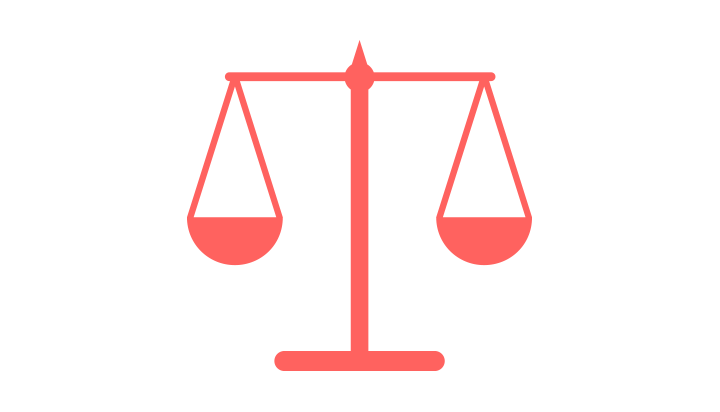
13 Jun Balancing Design
What’s good for design and designers? It’s all a question of balance. What does a balanced design industry look like? How does it differ from what we’re experiencing now and how do you balance it? And, acknowledging that static things tend to stagnate and die, how do you give it just enough lean to fall forward into the future with style?
Why worry about the balance of the design industry? Why not let ‘market forces’ shape the industry? Well it all stems from the complaints of designers who, having got over their first flush of excitement and the honeymoon of their first few professional jobs, look around the industry and notice that on average designers don’t make much money. Further they realise that there aren’t that many great jobs and great clients to go around. They start to gripe about the unfairness of non-designers cutting in on their turf, educational institutions irresponsibly producing too many graduates (now that they’ve graduated), the treadmill of software and hardware upgrades and the declining standard of everything since (insert preferred date here). Then they want to know why I haven’t done something about it.
Imbalance isn’t uncommon in industries. For example there aren’t enough rural GPs. Toolmakers seem in perpetual short supply. No one wants to be a nurse any more. And for some reason there always seems to be more politicians than positions in parliament, which puts the community to huge expense every few years holding elections.
The balance of the design industry has been affected by many things in recent years, some intentional and some unintentional. At the intentional end are factors such as the promotion of design to the manufacturing industry since the 1950s, the generation of design trained teachers and the inclusion of design in education at the secondary and primary school level and the formation of professional interest groups such as the Design Institute of Australia. At the unintentional level are aspects like the advent of the personal computer, the progressive move toward a service economy, the loss of manual labour jobs and the increased uptake of tertiary education.
So what does a balanced design industry look like? An industry in balance should produce good outcomes for the individuals within it and for the community it serves. Good outcomes can mean a great deal of different things to different people. In our wealthy society good outcomes for individuals are more than wages to afford food and shelter. They are linked to designers’ expectations of the industry in terms of jobs, income, career prospects, working conditions, lifestyle, security and status. These things are not absolutes. Rightly or wrongly designers compare their lot to the fortunes of other professionals and are not happy with what they see. For example the average graduate salary is $10,000 short of many other professions and the average adult design salary does not exceed the Average Weekly Ordinary Time Earnings benchmark.
In terms of outcomes for the community the design industry is not in balance either. Good outcomes for the community are about things like sensible use of resources (time, money, education, human potential), the physical and mental health of the population, the productivity of the community, the quality of professional service provided and the contribution made to the community’s social and commercial needs.
Imbalances in a profession don’t just have an adverse effect on the individual they also have an adverse effect on the community through things such as unemployment, loss of productivity, un-competitive services and products and even personal issues such as depression and relationships.
To put it in business speak there are several steps along the value chain that have to work in harmony for the design industry to be in balance. They are education, industry, profession, government and community.
Education is the supply of prepared people through the primary and secondary education system, their awareness of design and what it entails as a job choice, the fit of tertiary applicants to the training, the quality of tertiary education and the quality of graduates produced. Industry is the availability of suitable employment to provide jobs and, importantly, to provide post tertiary skills development. It is also the availability and stability of appropriate design work to build the strength of the design industry and suitably informed clients who are able to reap the most from the services offered. Profession is about the standard of professional practice, the industry development mechanisms and the support structure underpinning the industry. Government is the policy environment, the laws, taxes, regulatory systems and economy affecting both the design professions and the industries they serve. Community is the body of people from which the industry participants are drawn and includes such things as the value placed on design and the status of designers.
The goal of a professional body is to improve the outcome for its members, the individual professional designers. But a rational attempt at this must recognise the full complexity of the industry. Most of the elements of the value chain are not able to be directly controlled by the DIA. The task is to identify actions that will improve outcomes for professional designers while moderating the effects of both intentional and unintentional influences. The challenge is to pick accessible points of influence in the chain that don’t perpetuate imbalances. An example of this is to avoid untargeted promotional campaigns that fuel excess levels of entrants to the industry and concentrate on providing design professionals with practice information that will improve outcomes for their clients.
So balancing the design industry is no simple thing. It isn’t simply more promotion to manufacturers and developers or a new television program about inventions or design. The Design Institute is preparing a strategy document for design industry improvement due out later this year. It will be available through the DIA website at www.design.org.au.
Published June 2003 | Artichoke Magazine




